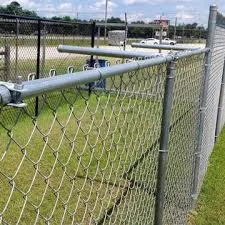Electric Fencing for Garden Deer Safeguarding Your Garden
Deer can be charming creatures to observe in the wild, but when they venture into residential gardens, they can become quite the nuisance. These graceful animals are known for their voracious appetites for greenery, often snacking on flowers, vegetables, and shrubs, causing significant damage to gardens. One effective solution for protecting your garden from deer is the use of electric fencing. This article will explore the benefits of electric fencing, how it works, and tips for installing it in your garden.
Understanding Electric Fencing
Electric fencing is a type of barrier that uses electricity to deter animals from crossing a boundary. Unlike traditional fencing made from wood or wire, electric fencing delivers a mild shock when animals make contact with the wires. This shock is not harmful but is enough to startle the animals, teaching them to associate the fence with an unpleasant experience. As a result, they are less likely to approach the garden in the future.
Benefits of Electric Fencing
1. Effective Deterrent Studies have shown that electric fences are highly effective at keeping deer out of gardens. The immediate feedback from the shock teaches them to stay away, reducing the likelihood of recurring visits.
2. Cost-Effective Electric fencing can be more affordable than traditional high fences, especially when covering larger areas. It requires less material and can be easier to install, making it a practical solution for garden protection.
3. Flexible Design Electric fencing is versatile and can be customized to fit any garden. Depending on your garden’s layout, you can design a fence that meets your specific needs.
4. Minimal Visual Impact Traditional fences can obstruct beautiful garden views, while electric fences are often less visually imposing. With various design options available, such as solar-powered systems, these fences can blend seamlessly into the landscape.
5. Additional Wildlife Protection Aside from deer, electric fencing can deter other animals, such as raccoons, rabbits, and even livestock. This multifaceted protection can help preserve your garden's integrity.
electric fence for garden deer

Installation Tips
Installing electric fencing requires careful consideration to ensure its effectiveness.
1. Choose the Right Type of Fence There are various types of electric fence systems available, including temporary and permanent options. For gardens, a temporary system is often sufficient, but if you live in an area with extensive deer populations, investing in a permanent solution may be wise.
2. Determine the Layout Before installation, sketch out a layout plan for your fence. Identify where the deer are entering the garden, and consider making the perimeter at least 6 to 8 feet tall to deter jumping.
3. Select Tree-Friendly Materials If your garden has many trees, consider using insulated stakes that won’t damage them. The fencing should be designed to allow your plants to thrive without risk of being entangled in the wires.
4. Use Warning Signs It’s essential to notify anyone who may encounter your fence, such as neighbors or children. Consider placing warning signs near the entrance of the garden.
5. Regular Maintenance Check the fence regularly to ensure it is functioning properly. Look for wear and tear on the wires, ensure the power source is working, and remove any debris that may interfere with the fencing.
Conclusion
Incorporating electric fencing into your garden protection strategy can be a game-changer in keeping deer at bay. By choosing the right type of electric fence and installing it correctly, you can safeguard your plants while enjoying the beauty of your garden without the fear of deer damage. With proper maintenance and monitoring, electric fencing serves as a long-term solution, allowing both you and the local deer population to coexist harmoniously.
















